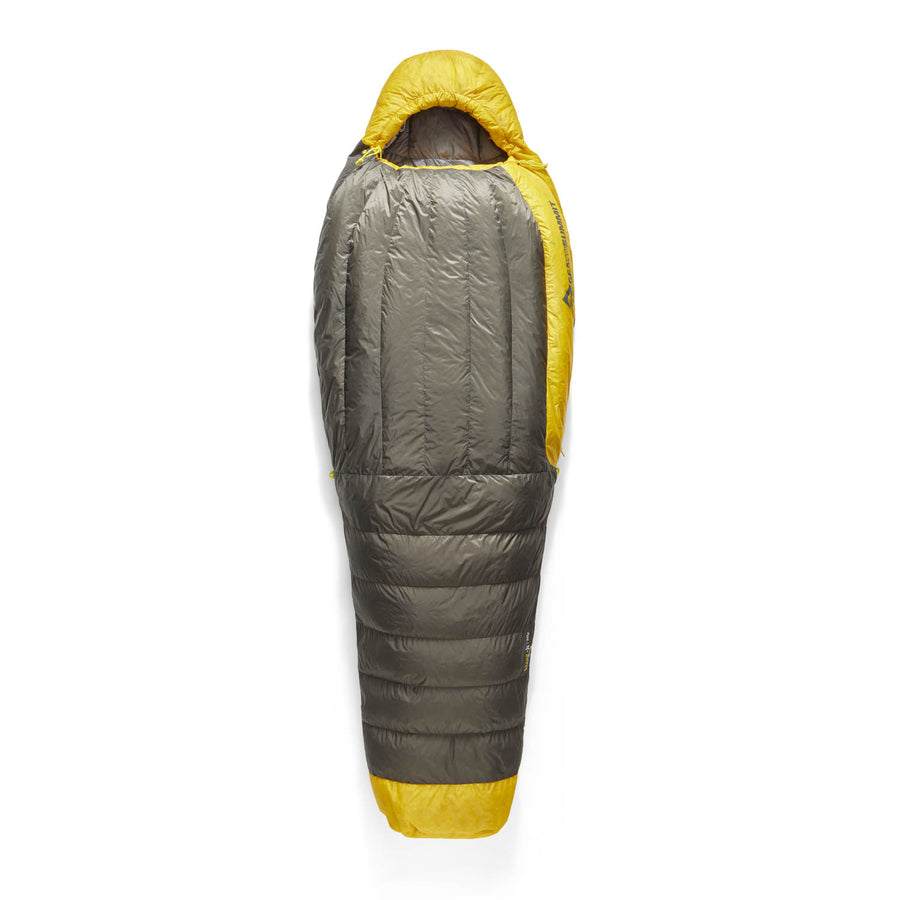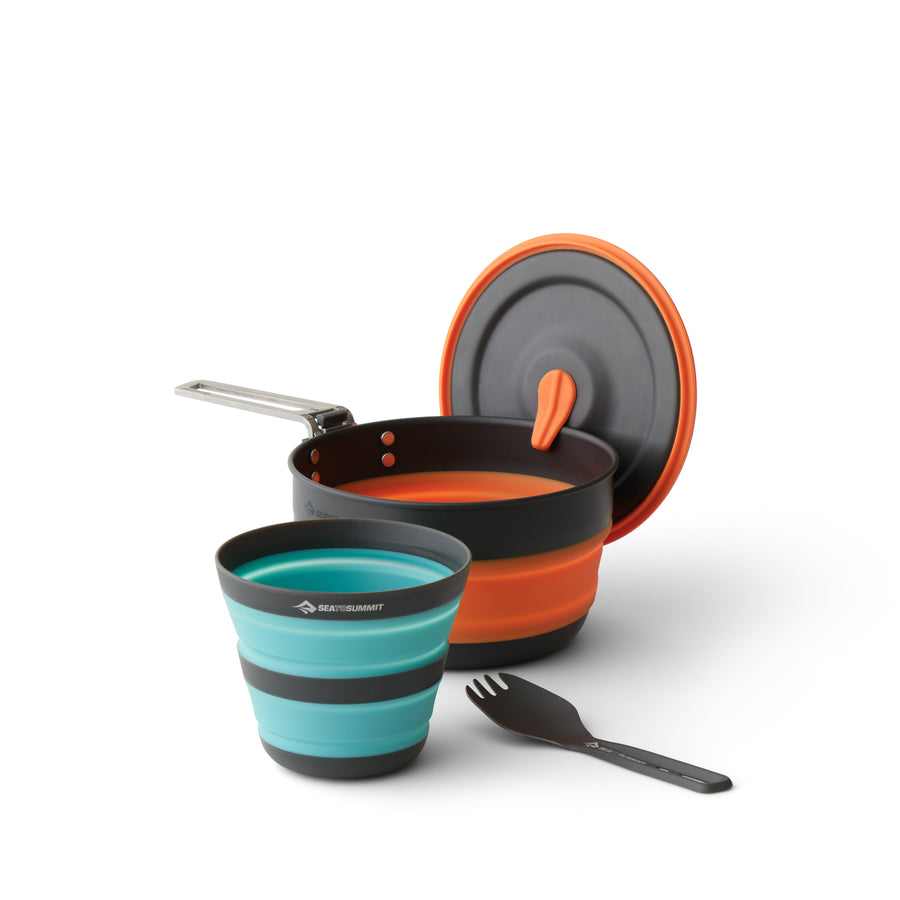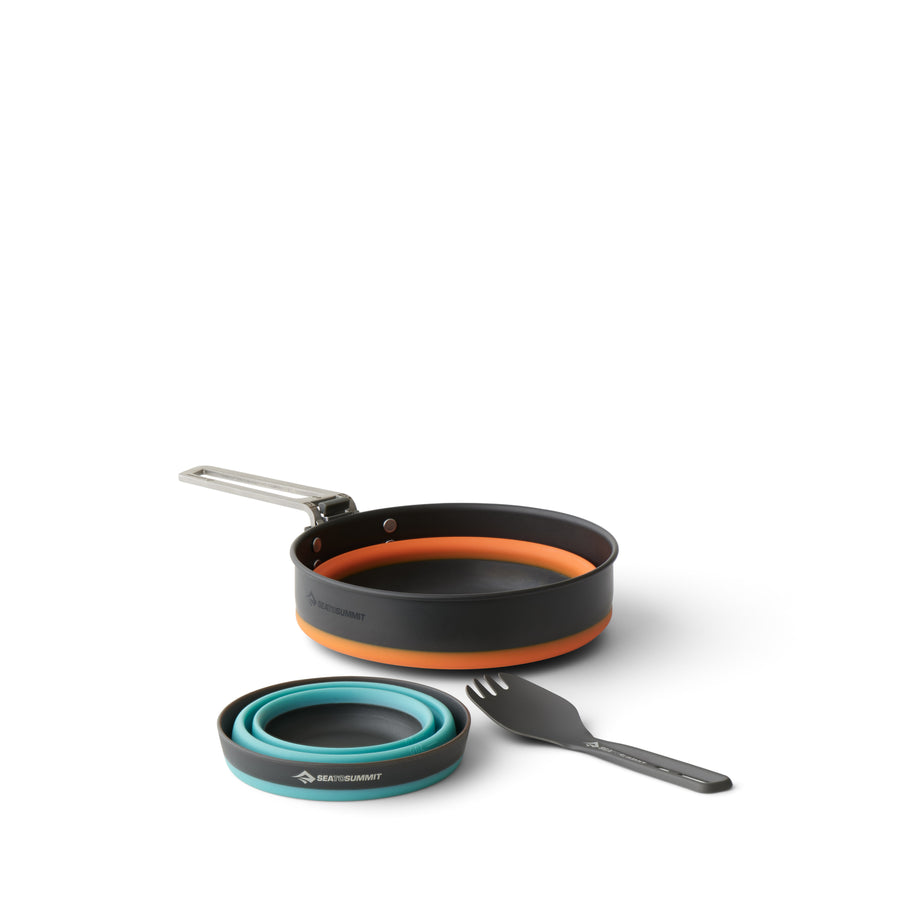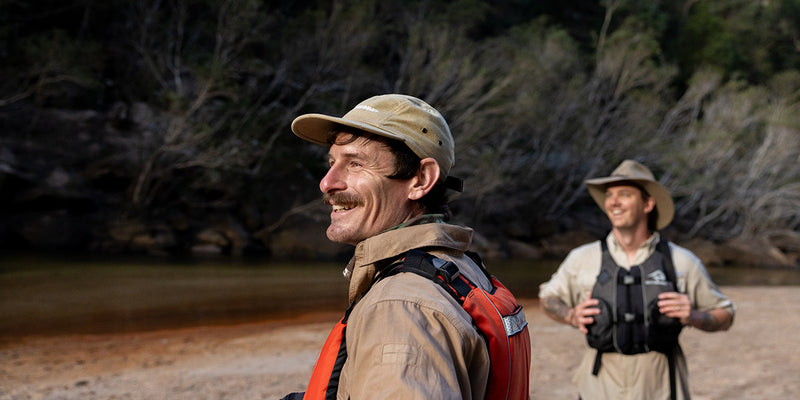The Life-Changing Act of Camping Solo

The first time I went camping solo I was terrified. That’s why I wanted to do it though—the more I get out of my comfort zone, the bigger the adventure becomes.
I shoved a $15 tent into my little yellow hatchback, along with a foam yoga mat I found in the cupboard, the comforter from my bed and a little gas cooker I picked up from the hardware store. I drove two hours south of Perth, Western Australia and set up camp next to the Collie river.
I felt like an imposter the whole time I was setting up. What’s this scared little girl (who’s afraid of the dark) doing out in the bush on her own? I wanted to walk back to my car and drive back to Perth—the city was so close.
Three other campers arrived, including a couple who helped me set up my tent (turns out it was called a two-person tent for a reason). One of the campers, Drew, was a seasoned outdoorsman who set up a little tarp and made a fire to cook his freshly-caught fish.
We sat by the fire and shared our stories as the sun set and the stars came out. Drew didn’t think I was an imposter. He thought it was great that I’d gotten out of the city and into the outdoors—whether I was prepared for it or not.

The night scared me the most. With every rustle of leaves, I conjured up images of serial killers slowly opening the zip of my tent. I vowed to stop listening to true crime. The next morning, I woke before dawn and wandered down to the river to take photos of the mist. My body felt broken (sleeping on a thin piece of foam will do that) and I’d hardly slept. But the trip had done its job. I knew I could do it now.
‘I love sharing my experiences, but I feel it so much deeper when I’m alone.’
Since then, I’ve been on many different outdoor adventures—with an actual sleeping bag and a proper sleeping mat. With each hike or climb (including my thru-hike along the Te Araroa Trail in New Zealand) I slowly felt that scared little girl growing into an independent woman.

The cape to cape
My most recent solo adventure took me on a hike down to the Cape to Cape, a 135km / 85 mile hike through Wadandi country in Western Australia's South West.
I arrived at my first camp just after sunset. The trees creaked (menacingly) and yet I wasn’t terrified anymore. Not even when I wandered up to the outhouse through a forest that wasn’t too dissimilar to that scene from the Blair Witch Project.
‘The best part about going on a solo adventure is that you don’t have to wait around for other people’s schedules.’
With only the thin beam of my headlamp lighting my path, I made it back to my little tent, snuggled into my warm sleeping bag, and thought back on what a wonderful day it had been—walking alone along the cliff tops, watching the waves breaking, and even spotting some whales in the distance. I love sharing my experiences, but I feel it so much deeper when I’m alone.
The best part about going on a solo adventure is that you don’t have to wait around for other people’s schedules. If you’ve got a free night or a weekend you can just run off.
Here’s how to master the art of the solo adventure (and open up a whole new world).
1. PRACTICE MAKES PERFECT
You don’t have to throw yourself in the deep end straight away. If you’re nervous about going solo, start small. Find a popular trail where you know you won’t be completely alone in the wilderness.
2. QUIT TRUE CRIME
I am a true crime addict. Shows like Mind Hunter or podcasts like My Favorite Murder were my go-to entertainment. Consume too much of it, however, and you start to build an unrealistic view of the world. My world feels a lot safer since quitting cold-turkey a few years back. Most people out there are good (but that doesn’t make an addictive podcast) and it’s worth trying to remember that.

3. ENJOY THE SOLITUDE
Being alone in nature doesn’t mean you have to be completely alone in nature. Bring a book, a journal, some podcasts (nothing on serial killers though) and some music (with headphones please).
Finding mental space out of the city doesn’t mean sitting in the forest and meditating the whole time—though it’s also nice to take the time to stop and listen to the birds and smell some flowers.
‘Having a comfortable sleep can be the difference between ‘that one terrible camping trip you took’ and a lifelong love of the outdoors.’
4. YOU’RE NEVER REALLY ALONE
Unless you’re a seasoned outdoorsman or outdoorswoman cutting your own path through the wilderness, it can be difficult to actually find complete solitude. On my most recent hike, there were at least two other people at each legal campsite. I could sit alone and read a book, or I could have a chat and make some new friends if I was in the mood.
If complete solitude is what you’re after though, other hikers are very understanding and don’t mind you wandering off to read your book alone. You can also try hiking off-season.

5. A LITTLE BIT OF COMFORT GOES A LONG WAY
This is especially true when you’re already out of your comfort zone. Having a comfortable sleep can be the difference between ‘that one terrible camping trip you took’ and a lifelong love of the outdoors. My sleeping mat has honestly changed my life. Lightweight hiking and camping trips don’t have to mean sore bodies, sleepless nights shivering and sticks digging into my hip. My sleeping mat is both lightweight, supportive and well insulated. Add a pillow and a good sleeping bag and your tent will feel like a second home.
6. BY FAILING TO PREPARE, YOU ARE PREPARING TO FAIL
People don’t realize that Benjamin Franklin actually said these famous words about a solo hiking trip he once went on.
When going into the wilderness, it’s important to have a plan. To know how far you’re going, what the water situation is going to be, how much food you’ll need to take and what the weather is going to do. Being outdoors unprepared is unsafe, and will completely ruin your trip. Nothing worse than seeing the storm clouds roll in and realize you left your rain jacket at home.
Before taking off on my first thru-hike, I completed a survival skills course. I can’t recommend this enough to anyone looking to gain more confidence outdoors.

7. LEAVE ROOM FOR THE MAGIC TO HAPPEN
Being prepared for what the outdoors can bring doesn’t mean there’s no room for spontaneity. Allow enough time in your schedule to stop for a swim or have a nap after a big lunch. There’s a reason the 5-day hike I just walked took me 7 days. And I wouldn’t change a thing.
8. GET USED TO PEOPLE TELLING YOU WHAT A BADASS YOU ARE
Being a solo female brings with it a certain amount of admiration that my male counterparts don’t get to enjoy. Probably because the outdoors weren’t as open to females for as long. I mean, Brede Arkless was the first international female mountain guide—and that wasn’t until the 1970s.
9. CARRY YOUR CHEESE KNIFE WITH PRIDE
I always thought if I carry a knife with me, it’s showing my fears and, therefore, my weakness. However, when I finally upgraded from my cheap, semi-blunt, knock-off Swiss Army knife to a sharp, good quality knife, it was a game changer. Not only could I easily slice cheese for my lunch, it acted as my security blanket when I heard eerie sounds in the night.

10. GET TO CAMP BEFORE DARK
Try and get to camp early, to give you time to get set up, cook and run to the toilet before the sun has set and everything becomes a little bit scarier.
11. IF YOU HAVE TO PEE, JUST PEE.
Many nights have been ruined by wondering if I should get up and pee or if I can sleep through it. The feeling doesn’t go away, so just get up and go. The relief you’ll feel completely makes up for the discomfort of climbing out of a warm sleeping bag.
Every time you get up and feel the eyes of the possums on you in the dark, and survive, the easier it becomes. Now I can climb out of my tent with ease, even when my headlamp lights up the eyes of some of the critters around me, I know there’s a 99.99% chance I’m going to survive my outdoor toilet experience.
‘Before each trip I get a little nervous. It doesn’t make me an imposter—it makes me prepare.’
12. CARRY A PLB
Although I’d love to have a movie made about my life because I’ve gone and done something adventurous, I don’t necessarily want that movie to be about my daring escape from certain death, so I have made it a practice to always carry a PLB (personal locator beacon). They come in all shapes and sizes with different abilities—from the fancy Garmin that lets you check the weather forecast and send your friends and family texts to let them know you’re still alive, to a simple beacon that only sends out an emergency signal to let search and rescue know exactly where you are.
If you’re not ready to fork over the money to buy your own, you can rent a PLB or borrow one from an outdoorsy friend.

13. LET SOMEONE KNOW WHERE AND WHEN YOU GO
Just in case something happens and you can’t press your PLB, it’s important to make sure someone knows where you are and when you’re expected back.
14. BRING A TRIPOD
Going solo doesn’t mean you don’t get to be in the pictures. On my solo adventures I take more photos of myself than on any other adventure (which makes sense, because I’m the only one there).
A self-timer and a tripod is also a great way to pass the time if you’re feeling lonely. Often photography has been the thing that pushes me to get further out of my comfort zone when I’m on a solo trip.

15. PRACTICE USING YOUR GEAR BEFORE YOU GO
Have a little camp out in the backyard so that you don’t do what I did the first time I pitched my first tent—discover it was impossible to set up on my own.
And get a tent you can pitch on your own. For the longest time, I felt like my fears meant I wasn’t worthy of the outdoors. That to be an outdoors(wo)man I had to let go of that fear. And, yet, if I wasn’t nervous or anxious, I probably wouldn’t have prepared appropriately. Before each trip I get a little nervous. It doesn’t make me an imposter—it makes me prepare.
Like everything, the more we practice, the better we get. Each trip makes it easier to go on the next trip. Each new adventure is bigger and better than the one before.










![Frontier Ultralight One Pot Cook Set - [3 Piece]](http://seatosummit.com.au/cdn/shop/files/FrontierULOnePotCookSet1P3Piece1.3LPotWithS-BowlandCup_ACK027031-122114_PRIMARY-1200x1200-9c6bd91.jpg?v=1749433473&width=900)
![Frontier Ultralight One Pot Cook Set - [3 Piece]](http://seatosummit.com.au/cdn/shop/files/FrontierULOnePotCookSet1P3Piece1.3LPotWithS-BowlandCup_ACK027031-122114_ADDITIONAL_1-1200x1200-9c6bd91.jpg?v=1749433473&width=900)
















